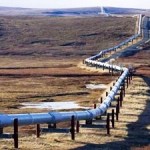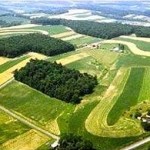Boulder – An international study, led by the National Center for Atmospheric Research (NCAR), could have implications for the air quality of fast-growing coastal cities in the United States and other mid-latitude regions overseas. The reason: the proliferation of strip malls, sub-divisions, and other paved areas may interfere with breezes needed to clear away smog and other pollution.
The research team combined extensive atmospheric measurements with computer simulations to examine the impact of pavement on breezes in Houston. They found that, because pavement soaks up heat and keeps land areas relatively warm overnight, the contrast between land and sea temperatures is reduced during the summer. This in turn causes a reduction in night-time winds.
In addition, built structures interfere with local winds and contribute to relatively stagnant afternoon weather conditions.

“The developed area of Houston has a major impact on local air pollution,” says NCAR Scientist Fei Chen, lead author of the new study. “If the city continues to expand, it’s going to make the winds even weaker in the summertime, and that will make air pollution much worse.”
While cautioning that more work is needed to better understand the impact of urban development on wind patterns, Chen says the research can eventually help forecasters improve projections of major pollution events. Policymakers might also consider new approaches to development as cities work to clean up unhealthy air.
The article will be published this month in the ‘Journal of Geophysical Research – Atmospheres’, a publication of the American Geophysical Union. The research was funded by the U.S. Air Force Weather Agency, the U.S. Defense Threat Reduction Agency, and the National Science Foundation (NSF), NCAR’s sponsor.
In addition to NCAR, the authors are affiliated with the China Meteorological Administration, the U.S. National Oceanic and Atmospheric Administration (NOAA), and the University of Tsukuba in Japan. The research built on a number of previous studies into the influence of urban areas on air pollution.
Cleansing the Air with More Parks and Lakes?
Houston, known for its mix of petro-chemical facilities, sprawling suburbs, and traffic jams that stretch for miles, has some of the highest levels of ground-level ozone and other air pollutants in the United States.
State and federal officials have long worked to regulate emissions from factories and motor vehicles in an effort to improve air quality.
The new study suggests that focusing on the city’s development patterns and adding to its already extensive park system could provide air quality benefits as well.
“If you made the city greener and created lakes and ponds, then you probably would have less air pollution even if emissions stayed the same,” Chen explains. “The night-time temperatures over the city would be lower and winds would become stronger, blowing the pollution out to the Gulf of Mexico.”
Chen adds that more research is needed to determine whether paved areas are having a similar effect in other cities in the mid-latitudes, where sea breezes are strongest. Coastal cities from Los Angeles to Shanghai are striving to reduce air pollution levels. However, because each city’s topography and climatology is different, it remains uncertain whether expanses of pavement are significantly affecting wind patterns elsewhere.
Nine Days of Pollution
For the Houston study, Chen and his colleagues focused on the onset of a nine-day period of unusually hot weather, stagnant winds, and high pollution in the Houston-Galveston area that began on August 30, 2000. They chose that date partly because they could draw on extensive atmospheric measurements taken during that summer by researchers participating in a field project known as the Texas Air Quality Study 2000. That campaign was conducted by the National Oceanic and Atmospheric Administration, the U.S. Department of Energy, universities, and the Texas Natural Resource Conservation Commission.
In addition to the real-world measurements, the study team created a series of computer simulations with a cutting-edge software tool, NCAR’s Advanced Weather Research and Forecasting Model.
Fei and his colleagues focused on wind patterns, which are driven by temperature contrasts between land and sea. If Houston were covered with crop-land instead of pavement, as in one of the computer simulations, inland air would heat up more than marine air during summer days and cause a sea breeze to blow onshore in the afternoon. Conversely, as the inland air became cooler than marine air overnight, a land breeze would blow offshore – potentially blowing away pollution.













